"Susan Fowler" uber
description: Susan Fowler is known for her blog post that exposed systemic sexual harassment at Uber
25 results
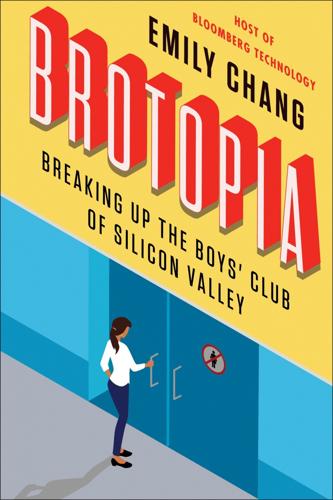
Brotopia: Breaking Up the Boys' Club of Silicon Valley
by
Emily Chang
Published 6 Feb 2018
If you are contacted by anyone asking for personal and intimate info about me, please report asap,” Twitter post, Feb. 24, 2017, https://twitter.com/susanthesquark/status/835193441814392833. Uber denied being behind: Sarah Buhr, “Uber Says It’s ‘Absolutely Not’ Behind a Smear Campaign Against Ex-employee Susan Fowler Rigetti,” TechCrunch, Feb. 24, 2017, https://techcrunch.com/2017/02/24/uber-says-its-absolutely-not-behind-a-smear-campaign-against-ex-employee-susan-fowler-rigetti. “Yeah, we call that Boob-er”: Mickey Rapkin, “Uber Cab Confessions,” GQ, Feb. 27, 2014, https://www.gq.com/story/uber-cab-confessions. video of Kalanick: Eric Newcomer, “In Video, Uber CEO Argues with Driver over Falling Fares,” Bloomberg, Feb. 28, 2017, https://www.bloomberg.com/news/articles/2017-02-28/in-video-uber-ceo-argues-with-driver-over-falling-fares.
…
When the two most senior and important leaders of a company are a party to women being treated as objects—as Kalanick and Michael were in that bar in Seoul—it is not hard to imagine how this might poison company culture and lead cases like Susan Fowler’s to be overlooked. Again, an external investigation documented forty-seven claims of sexual harassment at Uber. I reached out to Emil Michael about five months after he had left Uber, on the heels of Holder’s investigation. In a statement, he was both defensive and apologetic, clearly affected by the public reaction to Uber’s cultural unraveling and his role in it. He told me that he worked hard to build a diverse team, including women, at Uber, and said he deeply regretted “attending and failing to prevent” the visit to the South Korean bar.
…
CHAPTER 4: DINNER WITH WOMEN ENGINEERS Fowler joined Uber: Susan J. Fowler, “Reflecting on One Very, Very Strange Year at Uber,” www.susanjfowler.com, Feb. 19, 2017, https://www.susanjfowler.com/blog/2017/2/19/reflecting-on-one-very-strange-year-at-uber. Fowler did not have the typical: Susan J. Fowler, “Twenty Books That Shaped My Unconventional Life,” www.susanjfowler.com, Aug. 17, 2016, https://www.susanjfowler.com/blog/2016/8/15/20-unconventional-books-that-changed-my-life. “He was trying to stay”: Fowler, “Reflecting on One Very, Very Strange Year at Uber.” claimed that a “smear campaign”: Susan Fowler, “Research for the smear campaign has begun.

Super Pumped: The Battle for Uber
by
Mike Isaac
Published 2 Sep 2019
Chapter 22: “ONE VERY, VERY STRANGE YEAR AT UBER . . .” 213 85 percent of Uber engineers were men: Johana Bhuiyan, “Uber has Published Its Much Sought After Diversity Numbers For the First Time,” Recode, March 28, 2017, https://www.recode.net/2017/3/28/15087184/uber-diversity-numbers-first-three-million. 213 Like sailing “over the moon”: Maureen Dowd, “She’s 26, and Brought Down Uber’s C.E.O. What’s Next?,” New York Times, October 21, 2017, https://www.nytimes.com/2017/10/21/style/susan-fowler-uber.html. 215 “I don’t use Uber”: Dowd, “She’s 26, and Brought Down Uber’s C.E.O.” 215 “SREs worked to keep the service online”: Chris Adams, “How Uber Thinks About Site Reliability Engineering,” Uber Engineering, March 3, 2016, https://eng.uber.com/sre-talks-feb-2016/. 217 Performance reviews were little more: Megan Rose Dickey, “Inside Uber’s New Approach to Employee Performance Reviews,” TechCrunch, https://techcrunch.com/2017/08/01/inside-ubers-new-approach-to-employee-performance-reviews/. 219 losing upwards of $9,000 per vehicle: Greg Bensinger, “Uber Shutting Down U.S.
…
Chapter 27: THE HOLDER REPORT 269 already fired twenty people: Mike Isaac, “Uber Fires 20 Amid Investigation into Workplace Culture,” New York Times, June 6, 2017, https://www.nytimes.com/2017/06/06/technology/uber-fired.html. 270 “He definitely has my confidence”: Anita Balakrishnan, “Uber Board Member Arianna Huffington Says She’s Been Emailing Ex-Engineer About Harassment Claims,” CNBC, March 3, 2017, https://www.cnbc.com/2017/03/03/arianna-huffington-travis-kalanick-confidence-emailing-susan-fowler.html. 273 “Uber has a long way to go”: Emil Michael, “Email from Departing Uber Executive,” New York Times, June 12, 2017, https://www.nytimes.com/interactive/2017/06/12/technology/document-Email-From-Departing-Uber-Executive.html. 274 “For the last eight years”: Entrepreneur Staff, “Read Travis Kalanick’s Full Letter to Staff: I Need to Work on Travis 2.0,” Entrepreneur, June 13, 2017, https://www.entrepreneur.com/article/295780. 278 Bonderman was a shuffling giant: Henny Sender, “Breakfast with the FT: David Bonderman,” Financial Times, June 20, 2008, https://www.ft.com/content/569a70ae-3e64-11dd-b16d-0000779fd2ac. 278 239th richest man in the world: “#667 David Bonderman,” Forbes, https://www.forbes.com/profile/david-bonderman/#27d33dd32fce. 280 the entire contents of the presentation: JP Mangalindan, “LEAKED AUDIO: Uber’s All-Hands Meeting Had Some Uncomfortable Moments,” Yahoo!
…
And now, just a few years after leaving Penn, Susan Fowler was a site reliability engineer at Uber, the glittering unicorn of Silicon Valley. Uber represented an entirely new challenge: how to succeed in one of the most aggressive, most masculine, and most high-profile companies in Silicon Valley. The same month Uber hired her, Fowler met the love of her life. Chad Rigetti had “Michael Fassbender–worthy” good looks and an enthusiasm for quantum computing theory. Fowler was attracted to him almost immediately. At the end of their first date—dinner and a movie—Fowler reached for her iPhone to call for an Uber home. “No, no, no,” Rigetti said.
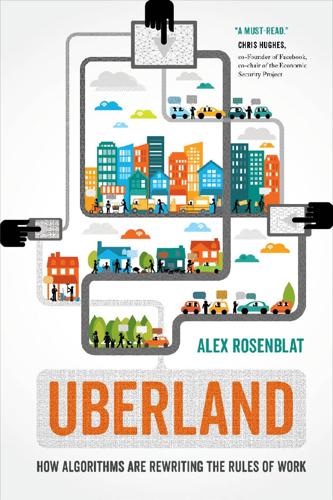
Uberland: How Algorithms Are Rewriting the Rules of Work
by
Alex Rosenblat
Published 22 Oct 2018
http://exuberation.com/regions-and-travels-publisher/326-free-designated-drivers-in-24-cities-in-the-us; DrinkingandDriving.org, “Prevention Tools,” www.drinkinganddriving.org/designated-driver-services/. 63. Alex Rosenblat, “Is Your Uber/Lyft Driver in Stealth Mode?” Uber Screeds, July 19, 2016, https://medium.com/uber-screeds/is-your-uber-driver-in-hiding-484696894139. 64. Judgment of December 20, 2017, Asociación Profesional Élite Taxi v. Uber Systems Spain SL, EU:C:2017:981, http://curia.europa.eu/juris/documents.jsf?num=C-434/15. 65. Charlotte Alter, “UN Women Breaks Off Partnership with Uber,” Time, March 23, 2015, http://time.com/3754537/un-women-breaks-off-partnership-with-uber/. 66. Susan Fowler, “Reflecting on One Very, Very Strange Year at Uber,” Susan Fowler (blog), February 19, 2017, www.susanjfowler.com/blog/2017/2/19/reflecting-on-one-very-strange-year-at-uber. 67.
…
Fowler, “Reflecting on One Very, Very Strange Year at Uber,” February 19, 2017, Susan Fowler (blog), www.susanjfowler.com/blog/2017/2/19/reflecting-on-one-very-strange-year-at-uber. 87. Kara Swisher, “With Her Blog Post about Toxic Bro-Culture at Uber, Susan Fowler Proved That One Person Can Make a Difference,” ReCode, June 21, 2017, www.recode.net/2017/6/21/15844852/uber-toxic-bro-company-culture-susan-fowler-blog-post. 88. Reuters, “Uber Picks Dallas and Dubai for Its Planned 2020 Flying Taxi Launch,” Fortune, April 25, 2017, http://fortune.com/2017/04/26/uber-dallas-dubai-2020-flying-taxi-launch/. 89.
…
In December 2017, the European Union Court of Justice dealt a serious blow to the power of that rhetoric when it ruled that Uber is a cab company, not a technology company.64 For perspective, there is no equivalent ruling in the United States that undermines Uber’s “we’re a technology company” spin. Not all groups that Uber works to conscript are equally cooperative. The United Nations women’s group cut off their partnership with Uber shortly after banding together in order to create 1 million jobs for women by 2020, after the UN realized that Uber is associated with undermining labor protections and hurting marginalized workers.65 Additionally, in 2017, a former Uber engineer, Susan Fowler, penned a firsthand account of the sexual harassment she experienced while she worked at Uber’s corporate office, which sparked a much larger cultural discussion of the sexual harassment in Silicon Valley.
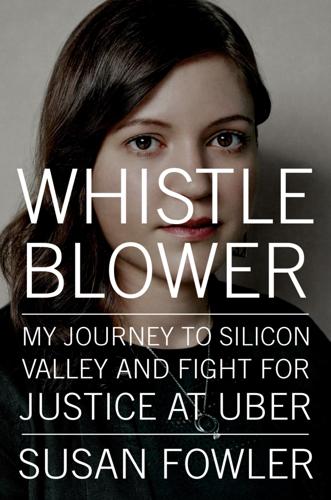
Whistleblower: My Journey to Silicon Valley and Fight for Justice at Uber
by
Susan Fowler
Published 18 Feb 2020
To make matters worse, there was a brand-new story in the papers about me or Uber every single day. I was able to push aside the small stories, but the bigger ones were impossible to ignore. The day after my blog post, Travis Kalanick and Uber hired Eric Holder, the former U.S. attorney general under President Obama, and Tammy Albarrán, a partner at the law firm Covington & Burling, to “conduct an independent review into the specific issues relating to the work place environment raised by Susan Fowler, as well as diversity and inclusion at Uber more broadly.” The investigation, Uber announced, would be overseen by Arianna Huffington and Uber’s chief HR officer, Liane Hornsey.
…
Another friend said that when she requested a lawyer be present in her interview with Uber’s lawyers, they refused to allow it. Yet another friend told me that at the end of his interview one of the lawyers demanded to know what exactly Susan Fowler might be planning next. If Uber employees declined to meet with the investigators or requested a lawyer, they were sternly reprimanded. One of the women from the LadyEng group showed me an email that she had received from Uber’s legal team in which she and other employees were told that if they didn’t meet with Uber’s investigators, they would be fired. They were also told that they were not allowed to bring lawyers to these meetings; according to Uber’s legal team, employees did not have the right to have a lawyer present because “this is not a police interrogation.”
…
LIBRARY OF CONGRESS CATALOGING-IN-PUBLICATION DATA Names: Fowler, Susan J., author. Title: Whistleblower : my journey to Silicon Valley and fight for justice at Uber / Susan Fowler. Description: [New York] : Viking, [2020] | Identifiers: LCCN 2019034425 (print) | LCCN 2019034426 (ebook) | ISBN 9780525560128 (hardcover) | ISBN 9780525560135 (ebook) Subjects: LCSH: Sexual harassment—California—Santa Clara Valley (Santa Clara County) | Sexual harassment of women—California—Santa Clara Valley (Santa Clara County) | Whistle blowing—California—Santa Clara Valley (Santa Clara County) | Uber (Firm)—Corrupt practices. Classification: LCC HD6060.5.U52 S36 2020 (print) | LCC HD6060.5.U52 (ebook) | DDC 305.42092 [B]—dc23 LC record available at https://lccn.loc.gov/2019034425 LC ebook record available at https://lccn.loc.gov/2019034426 Viking is committed to publishing works of quality and integrity.
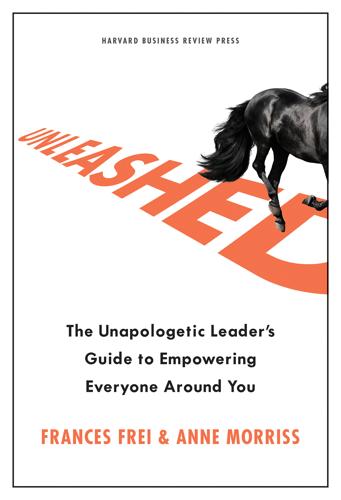
Unleashed
by
Anne Morriss
and
Frances Frei
Published 1 Jun 2020
A #deleteUber campaign began shortly after the company appeared to take advantage of a taxi strike in response to President Trump’s travel ban. A few months later, Uber engineer Susan Fowler blogged about her experience of harassment and discrimination in a culture she convincingly portrayed as ruthless.1 Footage then emerged of Kalanick interacting with an Uber driver, where he appeared dismissive of the difficulties of earning a living in a post-Uber world. Other charges leveled at the company in this period reinforced Uber’s reputation as a cold-blooded operator that would do almost anything to win. It did not help the company’s position that some of its challenges had morphed into public reckonings with ills that plagued the rest of the tech sector, too.2 These included inertia and confusion when it came to building safe and healthy workplaces.
…
Dempsey, “Mission Command White Paper,” Office of the Chairman of the Joint Chiefs of Staff, Washington, DC, April 2012. 8. Gallup, State of the Global Workforce (New York: Gallup Press, 2017). Chapter 2 1. Susan Fowler, “Reflecting on One Very, Very Strange Year at Uber,” Susan Fowler (blog), February 19, 2017, https://www.susanjfowler.com/blog/2017/2/19/reflecting-on-one-very-strange-year-at-uber. 2. Kara Swisher, ubiquitous journalist, entrepreneur, and conscience of the tech sector, was writing regularly about the urgent need for stronger leadership and accountability in the industry. 3. These ideas were explored in a TED talk Frances gave called “How to Build (and Rebuild) Trust” (TED Talk, TED2018, Vancouver, April 13, 2018). 4.
…
McCord tells the complete story herself in her terrific book, Powerful: Building a Culture of Freedom and Responsibility (USA: Silicon Guild, 2017). 7. Mike Isaac, Super Pumped: The Battle for Uber (New York: W.W. Norton & Company, Inc., 2019), 265. 8. Anyone who cares about getting culture right should read Susan Fowler, Whistleblower: My Journey to Silicon Valley and Fight for Justice at Uber (New York: Viking, 2020). 9. Dara Khosrowshahi, “Uber’s New Cultural Norms,” LinkedIn (blog), November 7, 2017, https://www.linkedin.com/pulse/ubers-new-cultural-norms-dara-khosrowshahi/. 10. We admire the practices of world-class leadership coaches like Jerry Colonna, who has dedicated his career to helping leaders disrupt the path from personal history to company dysfunction.
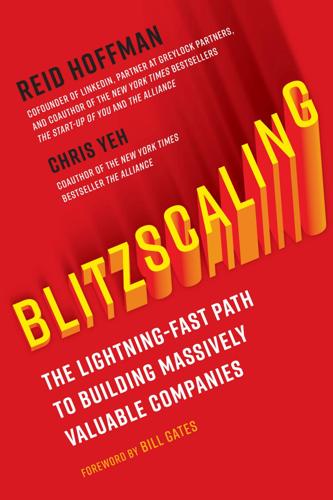
Blitzscaling: The Lightning-Fast Path to Building Massively Valuable Companies
by
Reid Hoffman
and
Chris Yeh
Published 14 Apr 2018
Just remember to save a few ships to fend off attacks from those pesky pirates! From Captain to Admiral At the time of the writing of this book, the ridesharing company Uber was Silicon Valley’s most valuable start-up (and second globally to its frenemy, China’s Didi Chuxing), despite having spent most of 2017 in the news for a number of serious problems and scandals. Some of these issues were due to clearly unethical behavior, including internal problems, such as the sexual harassment reported by the former Uber engineer Susan Fowler, and various external attempts to subvert free competition, regulation, and the press, such as creating fake accounts to poach drivers from its rival Lyft (as reported by The Verge), developing software (Greyball) to prevent law enforcement and regulators from accessing the service, and then-COO Emil Michael suggesting that the company spend money to hire opposition researchers to intimidate journalists.
…
You can’t run a Village the same way you run a Tribe, and you can’t run a City the same way you run a Village. But without structure, you won’t make it to the next stage of growth. It appears that Kalanick’s discomfort with Uber feeling “big” led to a dysfunctional organizational structure in which he clung to his previous ways. In the absence of a cohesive management team, Uber seemed to operate on a model that Susan Fowler described in her personal blog as “a game-of-thrones political war” with managers fighting for advancement: The ramifications of these political games were significant: projects were abandoned left and right, OKRs were changed multiple times each quarter, nobody knew what our organizational priorities would be one day to the next, and very little ever got done.
…
For successful blitzscaling, the competitive advantage comes from the growth factors built into the business model, such as network effects, whereby the first company to achieve critical scale triggers a feedback loop that allows it to dominate a winner-take-all or winner-take-most market and achieve a lasting first-scaler advantage. For example, Uber’s strategy of aggressive city-by-city expansion allows its customers to hail rides with fewer delays than its competitors. Uber wants you to be able to get a ride faster with Uber than with anyone else. This attracts more customers, which attracts more drivers, which increases the liquidity of the marketplace, which allows customers to hail rides even more quickly, which attracts more customers, and so on. Early Uber investor Bill Gurley laid out Uber’s strategy in his 2012 blog post “All Markets Are Not Created Equal.” As the company grows, they are able to facilitate more cars on the road, and along with their investment in route and load optimization, this allows for shorter and shorter pickup times.

Artificial Unintelligence: How Computers Misunderstand the World
by
Meredith Broussard
Published 19 Apr 2018
It shows up later in the behavior of tech CEOs like Travis Kalanick, who in 2017 was ousted from his top position at Uber for (among other things) creating a culture of sexual harassment. Kalanick also had the attitude that laws didn’t matter. He launched Uber in cities worldwide in defiance of local taxi and limousine regulations, created a program called Greyball to help Uber computationally evade sting operations by law enforcement, was captured on camera verbally abusing an Uber driver, and looked the other way when Uber drivers raped passengers.10 According to a blog post by former Uber engineer Susan Fowler, Kalanick’s tech managers were almost cartoonishly incompetent at dealing with the harassment complaints Fowler lodged.
…
Flew, Terry, Christina Spurgeon, Anna Daniel, and Adam Swift. “The Promise of Computational Journalism.” Journalism Practice 6, no. 2 (April 2012): 157–171. doi:10.1080/17512786.2011.616655. Fowler, Susan J. “Reflecting on One Very, Very Strange Year at Uber.” Susan Fowler (blog), February 19, 2017. https://www.susanjfowler.com/blog/2017/2/19/reflecting-on-one-very-strange-year-at-uber. Gomes, Lee. “Facebook AI Director Yann LeCun on His Quest to Unleash Deep Learning and Make Machines Smarter.” IEEE Spectrum (blog), February 18, 2015. http://spectrum.ieee.org/automaton/robotics/artificial-intelligence/facebook-ai-director-yann-lecun-on-deep-learning.
…
Dormehl, “Why John Sculley Doesn’t Wear an Apple Watch (and Regrets Booting Steve Jobs).” 8. Lewis, “Rise of the Fembots”; LaFrance, “Why Do So Many Digital Assistants Have Feminine Names?” 9. Hillis, “Radioactive Skeleton in Marvin Minsky’s Closet.” 10. Alba, “Chicago Uber Driver Charged with Sexual Abuse of Passenger”; Fowler, “Reflecting on One Very, Very Strange Year at Uber”; Isaac, “How Uber Deceives the Authorities Worldwide.” 11. Copeland, “Summing Up Alan Turing.” 12. “The Leibniz Step Reckoner and Curta Calculators—CHM Revolution.” 13. Kroeger, The Suffragents; Shetterly, Hidden Figures; Grier, When Computers Were Human. 14.

Your Computer Is on Fire
by
Thomas S. Mullaney
,
Benjamin Peters
,
Mar Hicks
and
Kavita Philip
Published 9 Mar 2021
Google Walkout for Real Change, “Google Employees and Contractors Participate in Global ‘Walkout for Real Change,’” Medium (November 2, 2018), https://medium.com/@GoogleWalkout/google-employees-and-contractors-participate-in-global-walkout-for-real-change-389c65517843; Matthew Weaver et al., “Google Walkout: Global Protests after Sexual Misconduct Allegations,” Guardian (November 1, 2018), https://www.theguardian.com/technology/2018/nov/01/google-walkout-global-protests-employees-sexual-harassment-scandals; Susan Fowler, “Reflecting on One Very, Very Strange Year at Uber,” personal blog (February 19, 2017), https://www.susanjfowler.com/blog/2017/2/19/reflecting-on-one-very-strange-year-at-uber; Maya Kosoff, “Mass Firings at Uber as Sexual Harassment Scandal Grows,” Vanity Fair (June 6, 2017), https://www.vanityfair.com/news/2017/06/uber-fires-20-employees-harassment-investigation. 3. For instance, many of the leaders of the Google Walkout have been forced to leave the company.
…
See also Thomas Misa, ed., Gender Codes: Why Women Are Leaving Computing (Hoboken, NJ: Wiley, 2010); American Association of University Women, Solving the Equation: The Variables for Women’s Success in Engineering and Computing (Washington, DC: AAUW, 2015). 5. Susan Fowler, “Reflecting on One Very Strange Year at Uber,” personal blog (February 2, 2017), https://www.susanjfowler.com/blog/2017/2/19/reflecting-on-one-very-strange-year-at-uber; Alyssa Newcomb, “#MeToo: Sexual Harassment Rallying Cry Hits Silicon Valley,” NBC News (October 23, 2017), https://www.nbcnews.com/tech/tech-news/metoo-sexual-harassment-rallying-cry-hits-silicon-valley-n813271, and Lydia Dishman, “This ‘Me Too’ Timeline Shows Why 2017 Was a Reckoning For Sexism,” Fast Company (December 6, 2017), https://www.fastcompany.com/40504569/this-me-too-timeline-shows-why-2017-was-a-reckoning-for-sexism; Louise Matsakis, “Google Employee’s Anti-Diversity Manifesto Goes ‘Internally Viral,’” Vice (August 5, 2017), https://motherboard.vice.com/en_us/article/kzbm4a/employees-anti-diversity-manifesto-goes-internally-viral-at-google. 6.
…
Like California’s wildfires, the software industry’s lack of diversity has generated a lot of heat but no real solutions. NSF data show that between 1993 and 2013, the percentage of women in computer science occupations actually declined from 31 percent to 24 percent.4 Scandals rocked Silicon Valley in 2017: former Uber engineer Susan Fowler divulged a pattern of sustained and egregious sexual harassment at that company; leading venture capitalists were ousted for sexual misconduct; and a viral Google memo argued that “biological causes . . . may explain why we don’t see equal representation of women in tech and leadership.”5 But data points to society—not biology—as the cause, since the proportions are very different in some other countries: in Malaysia, for example, half of all computer science degrees are earned by women.6 For years the big tech companies resisted disclosing their embarrassingly low diversity numbers, until civil rights activist Reverend Jesse Jackson appeared at a Google shareholders’ meeting in May 2014 and demanded the release of this data.

Zucked: Waking Up to the Facebook Catastrophe
by
Roger McNamee
Published 1 Jan 2019
If Chamath had continued to question Facebook’s mission, it is quite possible that the people he hired at the company, and those who knew him, might begin to question their leaders’ and company’s choices. The result might be a Susan Fowler Moment, named for the Uber engineer whose blog post about that company’s toxic culture led to an employee revolt and, ultimately, the departure of the executive team. What made Fowler so important was that Uber’s management team, board of directors, and investors had done nothing for years to change the toxic culture, despite a steady flow of bad news about it. Fowler framed the problem in a way that no one could deny, causing the employees to demand change.
…
Fowler framed the problem in a way that no one could deny, causing the employees to demand change. That is precisely what Palihapitiya did in his remarks at Stanford. It’s easy to imagine that Facebook might do whatever it took to prevent a Susan Fowler Moment. Chamath’s reversal triggered an insight. The window for Facebook to make a graceful exit from its predicament would not stay open forever. The opportunity to follow the example of Johnson & Johnson after the Tylenol tampering crisis of the 1980s would last only as long as Facebook could credibly plead ignorance of its misdeeds. Chamath had presented Facebook with a teachable moment.
…
With open source stacks as a foundation, engineers could focus all their effort on the valuable functionality of their app, rather than building infrastructure from the ground up. This saved time and money. In parallel, a new concept emerged—the cloud—and the industry embraced the notion of centralization of shared resources. The cloud is like Uber for data—customers don’t need to own their own data center or storage if a service provides it seamlessly from the cloud. Today’s leader in cloud services, Amazon Web Services (AWS), leveraged Amazon.com’s retail business to create a massive cloud infrastructure that it offered on a turnkey basis to startups and corporate customers.

Coders: The Making of a New Tribe and the Remaking of the World
by
Clive Thompson
Published 26 Mar 2019
“one very, very strange year”: Susan Fowler, “Reflecting on One Very, Very Strange Year at Uber,” SusanJFowler.com, February 19, 2017, accessed August 19, 2018, https://www.susanjfowler.com/blog/2017/2/19/reflecting-on-one-very-strange-year-at-uber. stalk their ex-girlfriends: Will Evans, “Uber Said It Protects You from Spying. Security Sources Say Otherwise,” Reveal News, December 12, 2016, accessed August 19, 2018, https://www.revealnews.org/article/uber-said-it-protects-you-from-spying-security-sources-say-otherwise. after a female journalist: Sarah Lacy, “Uber Executive Said the Company Would Spend ‘A Million Dollars’ to Shut Me Up,” Time, November 14, 2017, accessed August 19, 2018, http://time.com/5023287/uber-threatened-journalist-sarah-lacy.
…
There’s even been some pushback to the frat-house-style culture of many Silicon Valley firms. Consider Uber: In February 2017, the programmer Susan Fowler single-handedly shone a light into its culture, with a blog post describing “one very, very strange year” of working there. The company had a famously hard-driving, macho culture. Fowler enjoyed the insane pace of work and her talented colleagues; in her few spare hours, she authored a best-selling book on programming “microservices.” But she quickly discovered that harassment ran wild at Uber. Not long after Fowler had arrived, her manager propositioned her, via chat, for sex.
…
after a female journalist: Sarah Lacy, “Uber Executive Said the Company Would Spend ‘A Million Dollars’ to Shut Me Up,” Time, November 14, 2017, accessed August 19, 2018, http://time.com/5023287/uber-threatened-journalist-sarah-lacy. he calls it “Boob-er”: Mickey Rapkin, “Uber Cab Confessions,” GQ, February 27, 2014, accessed August 19, 2018, www.gq.com/story/uber-cab-confessions. had been forced out: Mike Isaac, “Uber Founder Travis Kalanick Resigns as C.E.O.,” New York Times, June 21, 2017, accessed August 19, 2018, https://www.nytimes.com/2017/06/21/technology/uber-ceo-travis-kalanick.html. Chris Sacca and Justin Caldbeck: Sage Lazzaro, “6 Women Accuse Prominent Tech VC Justin Caldbeck of Sexual Assault and Harassment,” Observer, June 23, 2017, accessed August 19, 2018, http://observer.com/2017/06/justin-caldbeck-binary-capital-sexual-assault-harssment; Becky Peterson, “ ‘Shark Tank’ Judge Chris Sacca Apologizes for Helping Make Tech Hostile to Women—after Being Accused of Inappropriately Touching a Female Investor,” Business Insider, June 30, 2017, accessed August 19, 2018, https://www.businessinsider.com/chris-sacca-apologizes-after-accusation-of-inappropriate-touching-2017-6; “Dave McClure Quits 500 Startups over Sexual Harassment Scandal,” Reuters, July 4, 2017, accessed August 19, 2018, http://fortune.com/2017/07/03/dave-mcclure-500-startups-quits; Maya Kosoff, “Silicon Valley’s Sexual-harassment Crisis Keeps Getting Worse,” Vanity Fair, September 12, 2017, accessed August 19, 2018, https://www.vanityfair.com/news/2017/09/silicon-valleys-sexual-harassment-crisis-keeps-getting-worse.
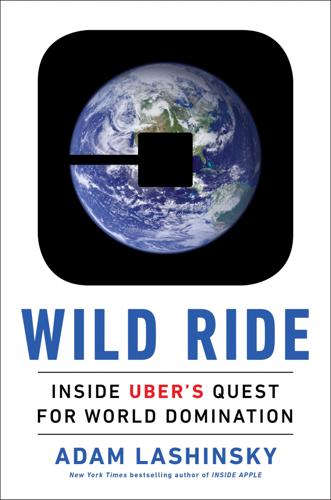
Wild Ride: Inside Uber's Quest for World Domination
by
Adam Lashinsky
Published 31 Mar 2017
Furthermore, when she reached out to Uber, a customer-service representative apologized and gave her a $30 credit—but initially failed to confirm that the driver had been punished or kicked off the platform. The sentiment also reached into the workforce of Uber itself. In February 2017, a former Uber engineer named Susan Fowler posted a story online titled “Reflecting on One Very, Very Strange Year at Uber.” She described allegations of having been sexually harassed by her male superior and then having her complaints ignored by Uber’s human resources department. Kalanick took to Twitter to call the allegations “abhorrent and against everything Uber stands for and believes in.” He also said the post was the first he’d heard of Fowler’s complaint, and he formed a committee that included board member Arianna Huffington and former U.S. attorney general Eric Holder to investigate.
…
When Kalanick first called Tusk in 2011, Uber couldn’t afford to pay the fee, so Kalanick offered Tusk Uber stock instead. That small piece of Uber was worth more than $100 million five years later. Launching Uber was like waging a multifront war. In Denver, for example, the Colorado Public Utilities Commission proposed rules to contain Uber in the months after it started operating, in mid-2012. Uber fought back with a social-media-oriented public-relations blitz that worked with riders who liked the service and drivers eager for the cash they suddenly were earning. In a blog post addressed to the “Uber-Faithful,” the company warned that proposed rule changes would make Uber’s pricing model illegal (which it compared to telling hotels they couldn’t charge by the night), ban Uber drivers from downtown Denver (“TAXI protectionism at its finest”), and make it illegal to partner with limousine companies.
…
If Kalanick was feeling the heat, it would only get worse for him and for Uber. The “Operation SLOG” campaign against Lyft had solidified a sense of Uber’s nefariousness among a growing slice of the tech-aware public. “Hopefully people understand what an evil company UBER is and boycott their service,” read one comment on The Verge, which published the exposé of Uber’s campaign against Lyft. Said another: “What can you expect when UBER’s CEO is another one of those Ayn-Rand loving libertarian nutjobs.” It became politically correct in some coastal cities to avoid Uber altogether. Then, in November 2014, Uber hosted a dinner in New York with influential journalists in which it hoped to put the company in a better light.
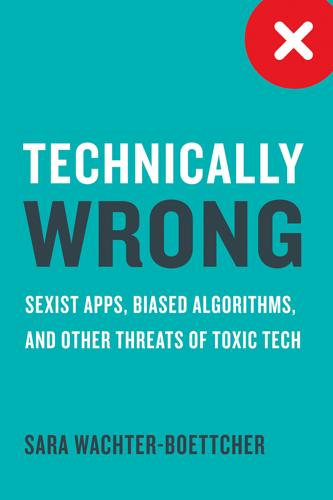
Technically Wrong: Sexist Apps, Biased Algorithms, and Other Threats of Toxic Tech
by
Sara Wachter-Boettcher
Published 9 Oct 2017
So let’s look more closely at how clinging to meritocracy myths can turn a tech company toxic, why doing so keeps the industry from becoming more representative, and what happens when an organization decides to do things differently. THE MERITOCRACY MELTDOWN On a fall day in 2015, Susan Fowler showed up for her first day of work as a site reliability engineer at Uber. She was thrilled: her department was new, her coworkers were smart, and she was told she could join any project she wanted. She spent a couple weeks in training, and then joined an engineering team that focused on her area of expertise. Her first day on the team, everything changed: her direct manager propositioned her for sex over chat.
…
Travis Kalanick, “A Profound Apology,” Uber Newsroom (blog), February 28, 2017, https://newsroom.uber.com/a-profound-apology. 19. Mickey Rapkin, “Uber Cab Confessions,” GQ, February 27, 2014, http://www.gq.com/story/uber-cab-confessions. 20. Nitasha Tiku, “Uber CEO on Driver ‘Assault’: It’s Not Real and We’re Not Responsible,” Valleywag, September 16, 2013, http://valleywag.gawker.com/uber-ceo-on-driver-assault-its-not-real-and-were-n-1323533057. 21. Alison Griswold, “Uber Is Designed So That for One Employee to Get Ahead, Another Must Fail,” Quartz, February 27, 2017, https://qz.com/918582/uber-is-designed-so-that-for-one-employee-to-succeed-another-must-fail. 22.
…
Twenty bucks says you’ll want to throw your phone in a river and move to a cabin off the grid by the time you’re done. 5. Andrew J. Hawkins, “Uber Wants to Track Your Location Even When You’re Not Using the App,” Verge, November 30, 2016, http://www.theverge.com/2016/11/30/13763714/uber-location-data-tracking-app-privacy-ios-android. 6. Jon Russell, “Uber’s Moral Compass Needs Recalibration,” TechCrunch, November 19, 2014, https://techcrunch.com/2014/11/19/uber-off. 7. Kai Ryssdal, “Uber’s Data Makes a Creepy Point about the Company,” Marketplace, Minnesota Public Radio, November 18, 2014, http://www.marketplace.org/2014/11/18/business/final-note/ubers-data-makes-creepy-point-about-company. 8.

The Passenger
by
AA.VV.
Published 23 May 2022
While political correctness has existed in the United States for forty years, it is still taking baby steps in Italy and having a hard time of it. And then there’s the #MeToo movement. It’s good to recall that this, too, was born in Silicon Valley and only later did it roll downhill to Hollywood. It all started in early 2017 when Susan Fowler, an Uber employee, wrote a post – which later grew into a well-known book, Whistleblower: My Journey to Silicon Valley and Fight for Justice at Uber (Penguin, 2021) – in which she denounced the discrimination she suffered within the company responsible for wiping taxis off the face of the earth. This all seems very abstract and futuristic to us in Italy; the few actresses who have complained about disrespectful directors were quickly silenced, and everything was buried.
…
So while in California the campus left raises fears of radicalism, in Italy our university rectors (straight white men – the sons and grandsons of past rectors) now feel threatened by the remote hint of that “dictatorship of political correctness”. Going back to Uber, I recall how Alice Waters once said to me in Rome, “How nice to see you have taxis again, that you’ve abolished Uber. Bravo.” (In Northern California Uber is seen as a dangerous company that represents the worst of the patriarchy following stories of harassment around its founder and its corporate culture.) It was embarrassing to have to explain to Waters that Uber never actually made it to Italy, at least not in its widespread American form, and that taxis still have a monopoly here.
…
When he finally found it, he thought nothing of locating his New Helvetia, the future state capitol, in the embrace of not one river but two, the worst floodplain in all of California. The city of Sacramento, girdled by levees and erected on a twelve-foot (3.5-meter) bed of borrowed earth, its gilded statehouse stabbing at sun, could not have looked more fitting and imperiled 180 years later. Protests against Uber and Lyft at Uber’s headquarters in San Francisco. Ballot-Box Blues: The Indirect Road to Direct Democracy Direct democracy in California takes many forms, sometimes unexpected, and the results of the various ballot initiatives are not always foregone conclusions. Here we take a look at this essential democratic tool through two of the most controversial propositions of recent times.

Gigged: The End of the Job and the Future of Work
by
Sarah Kessler
Published 11 Jun 2018
Uber didn’t give in on tipping until it faced a public relations crisis in 2017. Susan Fowler, a former employee at the company, published a blog post that documented a culture of sexual harassment and misogyny at the company, which led to an internal investigation that ultimately resulted in the firing of 20 employees and the ousting of Travis Kalanick, who resigned amid a shareholder revolt. The company was so desperate to mitigate the impact of this news that on a steamy summer day in New York City, it plopped a giant block of ice near Union Square, inside of which were “collectable cones” that could be taken to McDonald’s for ice cream (Uber had in previous years delivered free ice cream in the summer, but this was a truly over-the-top display).
…
The tech blog trumpeted each “Uber for X” app’s arrival with headlines such as: POSTMATES AIMS TO BE THE UBER OF PACKAGES—AND MORE WOULD YOU USE AN UBER FOR LAWNCARE? BLACKJET, THE UBER OF PRIVATE JETS, RELEASES ITS IPHONE APP SO I FLEW IN AN “UBER FOR TINY PLANES” MEET STAT, THE STARTUP THAT WANTS TO BE UBER FOR MEDICAL TRANSPORT Startups made Uber for food. Uber for alcohol. Uber for cleaning. Uber for courier services. Uber for massages. Uber for grocery shopping. Uber for car washes. Even Uber for weed. Uber itself hinted that it would take its business model far beyond transportation: “Uber is a cross between lifestyle and logistics,” Uber CEO Travis Kalanick told Bloomberg.
…
“That was the best day of my life,” Abe told me. Now feeling duped by Uber, Abe would use a similar strategy. “KC [Kansas City] UBER DRIVERS: The time has come to unite as one voice!” he wrote on his Uber Freedom Facebook page in July 2015. “We need to make a stand and unite as one and tell Uber, enough is enough! Join the organization that will ensure KC drivers are treated fairly.” Ten days earlier, he wrote, Uber had lowered rates in Atlanta by 22%, the first big cut in the short time Abe had been driving for Uber. “What is stopping them from lowering them [here]?” Abe asked. Around the same time, Uber deactivated Abe. The company hadn’t, according to Abe, provided an explanation, but he believed the decision was made in retaliation for his organizing activities (rather than, say, as a reaction to his habit of shotgunning rides).
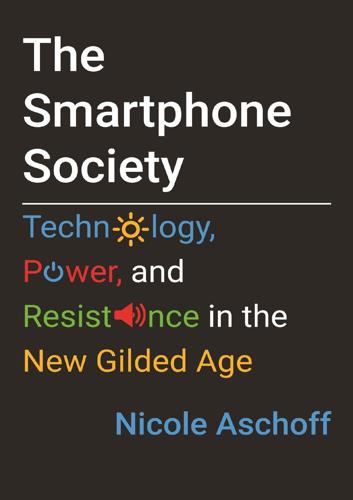
The Smartphone Society
by
Nicole Aschoff
Ordinary folks with a decent vehicle were promised a path to financial independence and the chance to be their own boss. Uber’s prestige and popularity made it a desirable place to work for young software engineers and computer programmers. The company promoted an image of a work-hard, play-hard environment where employees were changing the world and having fun doing it. Travis Kalanick, the face of the company when he was its CEO, was a media darling with reporters apt to marvel at his brightly colored sneakers and boyish charm. Uber’s glow faded fast, however, after Susan Fowler, a young software engineer at Uber, clued the world in on what really went on at the company.
…
For an interesting discussion, see also Yan Leng, Santistevan, and Pentland, “Familiar Stranger.” 3. Rivoli, “New York City Will Propose Minimum Wage for Uber, App Drivers.” 4. Desai, “How to Beat Uber.” 5. For information on ongoing campaigns see the website of the New York Taxi Workers Alliance, http://www.nytwa.org. See also Fitzsimmons, “Uber Hit with Cap as New York City Takes Lead in Crackdown.” Uber responded to the cap by suing the city in February 2019 to overturn the cap. The case was ongoing when this book went to press. For more, see Hawkins, “Uber Sues to Overturn New York City’s Cap on New Ride-Hail Drivers.” 6. Roose, “After Uproar, Instacart Backs Off Controversial Tipping Policy.” 7.
…
App jobs are a testing ground for employers to see how far they can go in externalizing both work and workers, to see how much they can force workers, consumers, and governments to take on the costs of production. Uber, the largest provider of app jobs in the United States, shows this externalization at work. Drivers provide their own vehicle (paying for gas, repair costs, and insurance) and phone, while Uber provides only the software and its network. Uber takes a 25 percent cut from each ride, yet drivers are not considered employees and the company is not responsible for their safety. Uber is also not responsible for the safety of its consumers (riders) nor the increased congestion and pollution it causes in urban centers.
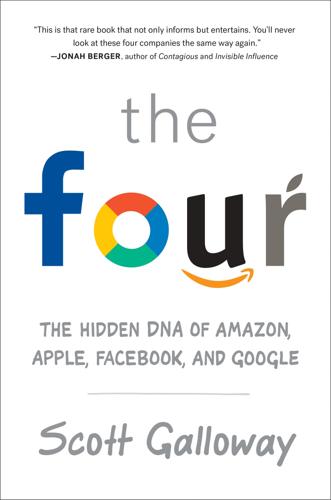
The Four: How Amazon, Apple, Facebook, and Google Divided and Conquered the World
by
Scott Galloway
Published 2 Oct 2017
There have been a series of reports that Uber management uses the technology’s ability to track riders in real time for entertainment or other personal reasons, including members of the press.27 In France, Uber ran an ad campaign that, at best, was sexist, and arguably suggested that Uber was a great way to hire an escort service.28 In 2016, Uber paid a $20,000 fine as part of an investigation by the New York attorney general into the misuse of its tracking capability.29 Worst of all, Uber’s likability took a major hit with Susan Fowler’s corporate sexual discrimination charges in February 2017.30 Actions by midlevel and C-level management ranged from callous to reprehensible in dozens of instances. Scrappy start-ups can sometimes get away with this sort of thing, but industry giants are expected to display greater maturity. Heads should have rolled, and some did, if months later. In June 2017, despite recommendations by external counsel that sought to reallocate the responsibilities of Kalanick, the board initially didn’t fire Kalanick; instead he announced he was taking an unlimited leave of absence.
…
Aspirational horsemen always show a willingness to go to market in ways unavailable to their old-guard competition. Uber, for example, operates in blatant contravention of the law in many, perhaps just about all, of its markets. It has been banned in Germany; Uber drivers are fined in France (but Uber pays the fines);13 and various U.S. jurisdictions have ordered Uber to cease operations.14 And yet, investors—including governments—are lining up to hand the company billions. Why? Because they sense that, in the end, the law will give way before Uber does; Uber is inevitable. And they are probably right. There are laws, and there are innovators. Good money is on the innovators. Uber not only evades the regulations traditionally applicable to car-for-hire services; it also evades labor law by posing as an app that links independent drivers—a posture that nobody seriously believes.
…
The app is already auto-populating your destination based on travel history, aging in reverse. Uber isn’t known as much of an accelerant, because very few people know anybody who works for Uber HQ. Uber only has a few thousand employees, and they’re very technically literate. Uber has figured out a way to isolate the lords (8,000 employees) from the serfs (2 million drivers), who average $7.75/hour, so its 4,000 employees can carve up $70 billion vs. $2 million on an hourly wage.25 So, Uber has said to the global workforce, in hushed but clear tones: “Thanks, and fuck you.” Can a car service really justify Uber’s $70 billion private-market valuation? Doubtful. But Uber is more than just a car service.
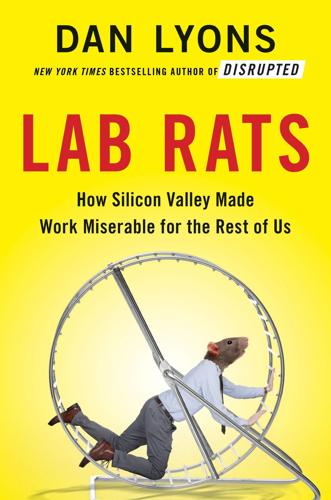
Lab Rats: How Silicon Valley Made Work Miserable for the Rest of Us
by
Dan Lyons
Published 22 Oct 2018
They also point out that they made the investment in Uber before they committed to social-impact investing.) The big win on Uber came with baggage. Uber had built a toxic culture that was the antithesis of everything the Kapors stood for. There was no diversity. Women were treated horribly. So while the investment added to the Kapors’ bank account it also became a blot on their reputation. In February 2017 Uber was engulfed in scandal after Susan Fowler, a former engineer at the company, published an essay on Medium describing sexual harassment that had driven her to leave the company. Soon other women from Uber came forward with similar stories about an abusive workplace. Uber tried to put out the fire by creating a team to investigate the complaints, led by Eric Holder, the former attorney general of the United States.
…
In the hands of a bad employer those options can make people incredibly vulnerable to abuse and exploitation. That is reportedly what happened at Uber. For several years after its founding in 2009, Uber was the hottest tech unicorn in the world. Getting a job at the San Francisco ride-sharing company was like winning a golden ticket. But Uber’s managers took full advantage of that. Uber became a toxic, stressful place to work, with bullying, allegations of sexual harassment, and a notoriously cruel culture. “It’s a money cult” is how a former worker described Uber to BuzzFeed in 2017. “People are putting up with massive amounts of abuse, mental abuse.”
…
An Automaton Class Uber manages its three million drivers almost entirely with software. Why not? The company makes no secret of the fact that it hopes one day (as soon as possible) to get rid of human drivers entirely and replace them with self-driving cars. For now, the ride-sharing company treats human drivers as poorly as it can and keeps them at arm’s length. Software becomes a barrier between worker and employer. To the driver, what is Uber? Where is it located? What does it look like? Uber is a black box. Uber is an app on a smartphone screen. Drivers rarely talk to actual human managers at Uber, except when being recruited, and sometimes not even then.
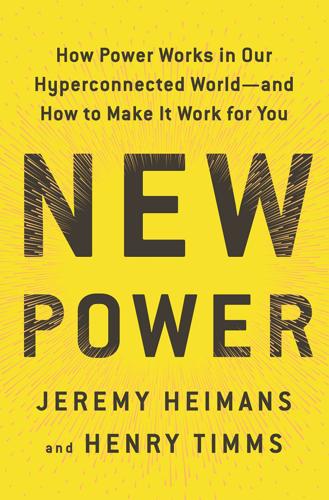
New Power: How Power Works in Our Hyperconnected World--And How to Make It Work for You
by
Jeremy Heimans
and
Henry Timms
Published 2 Apr 2018
Weeks later, another surge of deletions occurred after a former Uber corporate employee, Susan Fowler, blew the lid off the company’s culture of sexual harassment on her blog. Uber was reduced to sending messages to users who were trying to delete the app, pleading with them and saying it was “deeply hurting.” The media had a field day with these stories, compounded by more internal strife and the leak of a video of Kalanick arguing with one of his own drivers. Kara Swisher and her popular technology blog Recode were a critical voice (in both senses), shifting opinion against Travis and Uber. Kalanick had raised more venture capital than any start-up ever had, and in the end it was five of Uber’s big investors who put the dagger to Kalanick.
…
“your friend with a car”: Dimosthenis Kefallonitis, “Lyft.me, Your Friend with a Car,” Consumer Value Creation, January 22, 2014. Uber is defined by its remoteness: Alanna Petroff, “The Rise and Fall of Uber CEO Travis Kalanick,” CNNMoney, June 21, 2017. “The reason Uber”: Chris Smith, “Uber Wants to ‘Get Rid of the Dude in the Car’ with Driverless Taxi Service,” TechRadar, May 8, 2014. It all began when Uber: Caroline O’Donovan, “Uber Just Cut Fares in 80 North American Cities,” BuzzFeed, January 9, 2016. “In true Uber fashion”: Harry Campbell, “Uber to Cut Rates in More Than 100 Cities,” The Rideshare Guy (blog), January 8, 2016. www.therideshareguy.com.
…
Over the years, Uber had almost seemed to delight in picking fights with others in its circle. In 2014, Travis Kalanick explained Uber’s worldview this way: “We’re in a political campaign, and the candidate is Uber and the opponent is an asshole named Taxi.” (It is fair to say, given Kalanick’s own personal brand, that Taxi might see its opponent in similar terms.) Initially, Uber could rely on the support and energy of its drivers. But, as Fast Company’s Sarah Kessler observed, taxi drivers and Uber drivers began to recognize their common interests in the fight for better pay and conditions. Uber’s sudden rate cut in 2016 led taxi drivers and Uber drivers in the United States to form joint protests to avoid a “race to the bottom.”

Masters of Scale: Surprising Truths From the World's Most Successful Entrepreneurs
by
Reid Hoffman
,
June Cohen
and
Deron Triff
Published 14 Oct 2021
There were run-ins with regulators, taxi firms, and even Uber’s own drivers. Uber saw a backlash in its key markets and withdrew from some, such as China. Back home, Uber’s controversial approach to charging higher fares at peak times came to a head with the #DeleteUber campaign. And then there was Uber’s notorious, hyperaggressive “bro” culture. In February 2017—six months before Dara became CEO—a blog post by former Uber engineer Susan Fowler blew the lid off the misogyny and harassment that was rife at the company. As the only woman on Uber’s board of directors, Arianna Huffington had become deeply involved in trying to fix the company’s culture.
…
So Dara saw firsthand that it’s possible to survive and come back from even the most devastating setback. But still…walking into Uber in 2017? When asked what that must have been like, Dara responds: “I’m sweating because I’m remembering that first week.” A bit of background on just what Dara was walking into: First it should be acknowledged, without a doubt, that Uber was a huge success. Fueled by more than $22 billion in VC funding, Uber had, by 2017, become nearly ubiquitous, operating in six hundred cities around the world. But its size came with a cost; as Uber scaled rapidly, its culture began to veer out of control, owing to a combination of toxic leadership and questionable business tactics.
…
Dara knew that to right the ship at Uber, he’d need to firmly end the era of rule-breaking pirates, while encouraging the many ethical warriors he found among its ranks. From the outset, he took a leadership approach that he’d begun to develop in his years working for Barry Diller as head of the travel website Expedia. Rather than coming in and trying to impose a new culture on Uber, Dara wanted to see if he could encourage the people already there to help shape and guide the necessary transformation. So Dara immediately asked the Uber employees: What do you think should represent the culture of Uber going forward?

Don't Be Evil: How Big Tech Betrayed Its Founding Principles--And All of US
by
Rana Foroohar
Published 5 Nov 2019
The ubiquitous ride-hailing business he founded had been drawing criticism from municipal lawmakers and union activists—particularly in large cities like New York and San Francisco—for years, but their PR crisis reached a boiling point following a series of scandals that started with a blog post from a former engineer, Susan Fowler, alleging harassment and rampant sexism at the company. That news went viral in the same month that Waymo, an autonomous vehicle unit owned by Google’s parent company, Alphabet, filed a federal lawsuit against the ridesharing company alleging that a software engineer had stolen its trade secrets and taken them to Uber, which is developing its own autonomous vehicles. This was followed only five days later by a shocking video showing the CEO himself blowing up at an Uber driver who deigned to complain about the company’s payment system.1 Uber’s own dashcam recorded the interaction, in which the driver claimed to have gone bankrupt after investing $97,000 in a high-end car in order to drive for uberBLACK, only to find that rates began falling and the service was being dropped in favor of cheaper cars.
…
Rana Foroohar, “Privacy Is a Competitive Advantage,” Financial Times, October 15, 2017. Chapter 8: The Uberization of Everything 1. Leslie Hook, “Uber: The Crisis Inside the ‘Cult of Travis,’ ” Financial Times, March 9, 2017. 2. Video of Kalanick arguing with an Uber driver over fares can be accessed here: https://www.youtube.com/watch?v=gTEDYCkNqns. 3. Katy Steinmetz and Matt Vella, “Uber Fail: Upheaval at the World’s Most Valuable Startup Is a Wake-Up Call for Silicon Valley,” Time, June 15, 2017. 4. Sheelah Kolhatkar, “At Uber, a New CEO Shifts Gears,” The New Yorker, March 30, 2018. 5. Hook, “Uber.” 6. Eric Newcomer, Sonali Basak, and Sridhar Natarajan, “Uber’s Blame Game Focuses on Morgan Stanley After Shares Drop,” Bloomberg Businessweek, May 20, 2019. 7.
…
The Plight of the Gig Worker “Gig work” seems to have reached a new apex with the rise of companies like Uber. Consider the typical non-medallion taxi driver in New York, who might work for three or more companies at once: Uber, Lyft, and perhaps even an unlicensed cab firm. There is some truth to the claim that such people are essentially entrepreneurs, with all the freedom that working for themselves entails. With Uber, drivers set their own hours and are in a sense their own boss, something Kalanick always lauded as highly empowering. “There is a core independence and dignity you get when you control your own time,” he told me in 2015. Fair enough. But that’s about all Uber drivers are in control of.

Alpha Girls: The Women Upstarts Who Took on Silicon Valley's Male Culture and Made the Deals of a Lifetime
by
Julian Guthrie
Published 15 Nov 2019
Female entrepreneurs in Silicon Valley were coming forward to say they had been afraid until now to report the misconduct of certain venture capitalists. Susan Fowler, an engineer at Uber, accused her company of fostering a toxic culture of sexism. Uber CEO Travis Kalanick had quipped to a reporter in an interview years earlier that he should call the company “boober” for all the women he gets “on demand.” New allegations of abuse and bad behavior seemed to make headlines every day. Everyone at the Broadway Angels table knew someone who was accused of misconduct or worse. Shervin Pishevar, the Menlo partner and Uber investor who had moved into Sonja’s old office, was being accused of sexual harassment and assault by a handful of women.
…
Sonja had spent countless hours under the tutelage of her father, who had been a professor of civil engineering and the director of the Center for Transportation Studies at the University of Virginia. Sonja told Carolan and Pishevar, “Point-to-point public transport is the holy grail of public transportation. Uber enables point-to-point public transport using existing resources and creating jobs.” She was relentless this time in sharing her views of the importance of the company. Menlo succeeded in landing a deal with Uber and led the Series B investment with $26 million of the $39 million round. (Other Series B investors included Jeff Bezos and Goldman Sachs.) Around the same time, Sonja helped engineer the sale of one of her earlier investments, Q1 Labs, to IBM.
…
It had given rise to more new companies and industries than anywhere else in the world, including such technology giants as Hewlett-Packard, Fairchild Semiconductor, Intel, Teledyne, ROLM, Amgen, Genentech, Advanced Micro Devices, Tandem, Atari, Oracle, Apple, Dell, Electronic Arts, Compaq, FedEx, Netscape, LSI, Yahoo!, Amazon, Cisco, PayPal, eBay, Google, Salesforce, LinkedIn, Tesla, Facebook, YouTube, Uber, Skype, Twitter, and Airbnb. But Mary Jane and the other Alpha Girls would need steel in their spines to stay the course, and they would pay a steep emotional price along the way. They would be betrayed when they least expected it. Silicon Valley, teeming with youthful testosterone, is a deceptively rough arena, where bullying, bias, dysfunction, and subjugation are part of the rules of engagement.

Careless People: A Cautionary Tale of Power, Greed, and Lost Idealism
by
Sarah Wynn-Williams
Published 11 Mar 2025
I know something’s up when things don’t move fast. At the same time I pitch this transfer, Eric Holder’s report on sexual harassment at Uber is getting a lot of attention in Silicon Valley. This came out in the wake of the revelations by a whistleblowing engineer named Susan Fowler, who wrote a blog post detailing how she’d been treated by her bosses at Uber, and the failure of Uber’s HR department to help her. One of Holder’s big recommendations is specifically about allowing people to transfer away from bosses who they report are harassing them. At Uber, supervisors were blocking transfers, trapping women with those they were complaining about.
…
Mark opens the meeting by talking admiringly about what he calls “street fighter tactics” that Uber is employing against politicians around the world and how successful they’ve been. I’d thought there was a general agreement that Facebook didn’t use these underhand tactics and we certainly didn’t admire them. Uber weaponizes their drivers and riders, creating strikes, protests, and transportation chaos, forcing authorities to the table. They’re sponsoring the soccer teams of the children of key Brazilian senators responsible for decisions that impact their business, insisting on having UBER plastered across their kids’ uniforms. They propose compiling opposition research on journalists.
…
They propose compiling opposition research on journalists. It’s dirty. But what becomes clear the more Mark speaks is that not only does he not judge what Uber is doing, he’s judging us for not doing it. Mark believes Facebook could have a lot more leverage with politicians than Uber ever could, and we’re failing him by not using these tactics. He launches into a spiel about Emperor Augustus, his favorite emperor, who led the transformation of Rome from a republic to an empire. He talks about “offense.” He wants to mobilize Facebook users. He wants pro-Facebook activists. He wants protests. Then he talks “defense.”
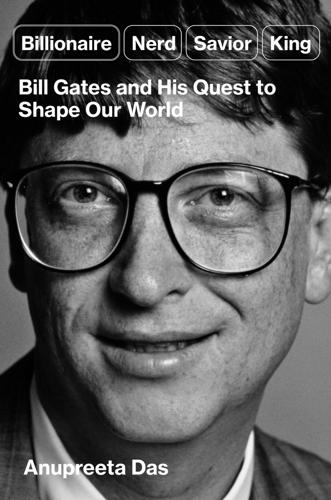
Billionaire, Nerd, Savior, King: Bill Gates and His Quest to Shape Our World
by
Anupreeta Das
Published 12 Aug 2024
Ellen Pao, a former partner at Kleiner Perkins who sued the storied venture capital firm in 2012 for discrimination and bias, found herself a pariah amid venture capitalists after her lawsuit, which she lost. In it, she described a culture of all-male networking, including a ski trip to Vail that she was excluded from.35 Susan Fowler, an engineer at Uber, wrote a detailed blog post in 2017 about a hostile work environment at the ride hailing company, describing a culture of sexism, sexual harassment, and retaliation. Recent efforts to promote more female founders and invest in companies excluded from the typical Valley networks hold promise, but largely, the tech world’s underlying culture of maleness is just as rock steady as ever.
…
In its place was a buff jock in aviator sunglasses, sporting a sleeveless puffer vest over a fitted T-shirt that showed off his bulging biceps, an appearance that gave rise to the meme “Swole Bezos.” The media moment soon passed, but the image had staying power because the transformation from wimpy nerd to uber-masculine “bro” captured perfectly the potency of today’s tech heroes. Others too have shed their nerd physicality. Zuckerberg took up jujitsu and competed in his first tournament in the spring of 2023, even winning some medals. He and Musk also challenged each other to an actual cage fight, which appeared to start as a joke on Twitter but quickly turned into a duel, revealing the bro, newly emerged from his nerd shell.
…
The foundation’s first two chief executives came from Microsoft; Jeffrey Raikes, who held the chief executive’s job from 2008 to 2014, is also a close friend of Gates. Larry Cohen, the chief executive of Gates Ventures, is a former Microsoft executive. Nathan Myhrvold, Microsoft’s first chief technology officer, is a longtime friend and ally in whose patent firm, Intellectual Ventures, Gates has invested. It’s hardly unique for the world’s uber wealthy to have armies of people around them. From philanthropy advisors to personal chefs, entire industries exist to channel the largesse and serve the whims of the rich. Gates’s activities continue to expand steadily, as a universe does, requiring more staff and holding companies. Although Cascade remains at the heart of the Gates financial engine, the billionaire has for years made personal investments through Gates Ventures.
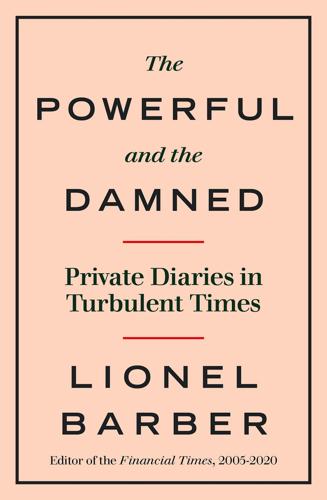
The Powerful and the Damned: Private Diaries in Turbulent Times
by
Lionel Barber
Published 5 Nov 2020
Zelda Perkins, Weinstein’s long-time personal assistant, is ready to break her NDA and reveal her own sexual abuse at the hands of her boss, as well as the suspected rape of a friend of hers. Weinstein’s lawyers have threatened us but we’ve seen them off. The only issue is whether Perkins is legally exposed. My bet is they won’t dare touch her. And I’m right. At the end of 2019, the FT named Susan Fowler, the software engineer who lifted the lid on sexual harassment at Uber, as Person of the Year. Her revelations helped to topple Uber’s founder, Travis Kalanick. The choice of Fowler broke with an unspoken tradition of selecting establishment figures and reflected a new balance of power in the workplace and in Silicon Valley. Previously untouchable bosses would soon come under the spotlight.
…
Together with sterling and house prices, British self-regard has become unnaturally inflated. It is due for a correction.’ 23–25 SEPTEMBER Election fever is coursing through the Labour party conference in Bournemouth, dampened only by a light south coast drizzle. Sunday dinner is with John Hutton, the über-Blairite business minister who’s somehow survived into the Brown Cabinet. He’s a World War I buff and has just finished the draft of Kitchener’s Men, a history of the King’s Own Royal Lancasters in France during the Great War. Hutton is pushing for an early election. ‘The Tories are in disarray … People are being marched up the hill.
…
Lee) 182, 182n Lehman Brothers x, xiv, xv, 5n, 37, 46, 81, 85, 86, 87, 101–2, 104, 105, 107, 121, 160, 199, 432 Le Pen, Marine 349, 353, 380 Leveson Inquiry xv, 177–8, 191–2, 194–5, 197, 200–202, 220, 221, 222–3, 227, 236, 237, 239, 257n Leveson, Lord Justice 177, 194, 195, 201–2 Lewis, Leo 181 Lewis, Simon 143 Lewis, Will 135, 135n Liberal Democrats xv, 135, 135n, 151, 158, 158n, 159, 195–6, 274, 275, 275n, 284, 288, 290, 354 Libor rate 168, 212 Libya 142, 177, 180, 259, 330, 355, 387 Li, Frank 207–8 liquidity, financial 69, 70, 86, 94, 103, 117, 323 Lisbon treaty, EU 64, 64n, 67, 381 Liu Xiaoming x, 206–7, 374–5 Llewellyn, Ed 308–9 Lloyds Bank 19 Long-Term Capital Management (LTCM) 86, 86n Luce, Ed 130, 190 Maastricht treaty (1992) 64n, 342, 389, 426, 433 Mackay, Angela 284 Mack, John 85, 86 MacLeod, Lisa 147, 203 Macron, Emmanuel 353, 412–13 MacShane, Denis 41 Mail on Sunday 58, 197, 220–21, 227, 265 MailOnline 357 Ma, Jack 233 Major, John 139, 157, 217n, 290, 320, 342n, 414 Major, Tony 240–41, 254–5, 272 Ma Kai 271 Makinson, John 189, 282 Malema, Julius 260–61 Mallet, Victor 245, 392–3 Malmström, Cecilia 328 Mandela, Nelson 51, 52, 53 Mandelson, Peter 65, 190, 244 Manningham-Buller, Eliza 20–22 Marchionne, Sergio 375–6 Markle, Meghan 422 Marks and Spencer 235–6, 244 Marriage, Madison 368–9, 370, 371, 372, 373–4, 382, 384 Massoudi, Arash 295, 296 Mayer, Marissa 73–4 May, Theresa ix, xvi, 274, 310, 323, 324, 326, 327, 328, 333–4, 339, 342–3, 345–6, 349–50, 353–4, 358, 359–60, 365, 373, 375, 381, 388, 399–400, 402, 406, 410, 411, 413, 414, 420, 425 Mbeki, Thabo 51–3 McCain, John 96, 99 McChrystal, Stan 148–9, 148n, 150 McClean, Paul 356–7, 395 McCoy, Danny 188 McCrum, Dan 404, 405, 407, 421 McDonnell, Finola 406–7 McGregor, Heather 14 McKinsey 122, 197, 243, 245, 306 McLaren, Malcolm 155–6 McMaster, Lieutenant General H.R. 366, 366n McNulty, Sheila 35 Media Standards Trust 220–21 Medvedev, Dmitry xiv, 89, 90–91, 329, 417 Melbourne Mining Conference 386–7 Meng Wanzhou 399 Merkel, Angela ix, xiv, xvi, 95–7, 153, 199, 211, 253, 274, 309, 323, 326, 358–9, 367, 368, 420, 426, 433–5, 437 Merrill Lynch 16, 86, 102 #MeToo 357, 369, 370 Metropolitan Police 165 Meyer, Christopher 139 Micklethwait, John 238, 258 Middleweek, James 20 MI5 20–22 Miliband, David 162, 163–4, 193 Miliband, Ed 162, 164, 193, 273, 286, 290 Miller, Maria 220, 223 Mill, John Stuart 423, 423n Mirror Group 197, 227 MI6 21, 180 Misra, Rajeev 383 Mitchell, Tom 390 Modi, Narendra ix, 244–6, 309, 348, 407–9 Molotov, Vyacheslav 90, 90n Monti, Mario 196, 203–4, 367–8 Moreno, Glen 114–15, 294 Morgan Stanley 85, 86, 102, 113 Morgan, John Pierpont 93 Morgan, Piers: The Insider 11 mortgage-backed securities 62, 84, 85, 114 Mosbacher, Georgette 242, 333, 358, 366 MPs expenses scandal 135–6 Mubarak, Hosni 54 Mudie, George 127 Mueller investigation, US 374, 374n Mugabe, Robert 52, 53, 261 Mulcaire, Glenn 190 Mulvaney, Mick 366, 366n Münchau, Wolfgang 172, 180 Murdoch, James 63 Murdoch, Rupert xv, 5, 5n, 28, 59–61, 65, 67, 161–2, 177, 191, 222, 267–8, 282, 289, 291, 317, 318 Murphy, Paul 27, 291, 368, 369, 382, 384, 405, 421 Murray, John 386 Musk, Elon 221–2 Myanmar 229–31, 233 Narayanan, M.K. 169 National Security Agency (NSA) 236–7 National Union of Journalists (NUJ) xiv, 202, 203, 240, 311 NatWest Bank 22, 22n Navalny, Alexei 328–9, 329n Nayef, Mohammed bin 308 Nazarbayev, Nursultan 142, 176, 176n Netanyahu, Benjamin ix, xiv, 102, 108, 109, 109n Netflix 398–9, 439 Neville-Rolfe, Lucy 23 Newman, Cathy 15, 15n News Corporation 5n, 268 News International 161–2, 165, 191 News of the World xv, 11, 139, 165, 177, 190, 191, 223, 223n, 237, 324n Newton, Gordon 9, 391 New Yorker 381 New York Post 119 New York Stock Exchange 86, 234 New York Times 35, 59, 61, 161, 165, 189, 216n, 224, 225, 258, 298, 332 NHS (National Health Service) 180, 180n, 232, 289, 313, 422 Nikkei xv, xvi, 281, 283, 284–5, 295–300, 295n, 301–3, 304, 305–6, 310–11, 312, 321, 339, 371, 373, 374, 390, 391, 394, 403, 407, 428, 431 Nikkei Asian Review 403 9/11 terrorist attacks (2001) 76, 236 Nixon, Richard 10, 45, 241, 267 non-doms 82–3, 83n, 319 Noonan, Peggy 317 North Korea 54, 182, 253–4, 348, 349, 366, 374, 376, 397 Northern Rock 45, 70, 77, 88, 127 Oakeshott, Isabel 316 Obama, Barack xii, 55, 68, 82, 96, 96n, 97, 98, 99, 113–14, 117, 130–31, 132, 148n, 162, 163, 187, 188, 189, 204, 219, 222, 233, 236, 307, 320, 331, 333, 342, 348, 378, 396, 413, 435 Obamacare 342, 348 Obama, Michelle 204 Office of Budget Responsibility (OBR) 106 Okada, Naotoshi 284, 298, 299, 404 Oliver, Craig 180 Olympics: (2008) 98–9; (2012) 98–9, 243 Olympus Corporation 298 1MDB (Malaysian state investment fund) 167 O’Neal, Stan 16, 148 Osborne, George xv, 81, 82, 97, 106, 156–7, 159, 174, 193, 209, 255, 259, 273–4, 289, 308, 318–19, 324, 345, 377, 378, 413 Owen, Geoffrey 252, 411 Owen, Jane 174–5, 264, 270 Oxford Union 41, 41n, 340 Page, Bruce 62 Page, Larry 326 Pakistan 41n, 132, 161, 168, 169, 170, 171–2, 203, 309, 363 Palestinians xv, 54–5, 107, 108, 109, 208, 378 Palin, Sarah 99 Pandit, Vikram 85, 113 Parker, Alan 153, 153n Parker, George 152, 153, 157, 320, 322–3, 359 Parker, Lieutenant General Nick 150 Patten, Chris 217, 217n Paulson, Hank 31, 31n, 55–6, 57, 87, 104 Payne, Sebastian 313, 410 Pearson x, 3, 3n, 5, 8, 15, 18, 19, 29, 43, 66, 73, 114, 115, 128, 189, 213, 218, 251, 253, 257, 282, 288–9, 292, 293, 294–7, 302–3, 311 Pence, Mike 333 Penguin Books 189, 282 Perkins, Zelda 357 Peston, Robert 70, 127 Pfizer 263 phone-hacking xv, 41, 76, 139, 162, 165, 166, 177, 190–91, 195, 223, 223n, 236, 268, 291 PIGS (acronym for southern European nations) 100–101 Pilling, David 165, 355, 356 Piris, Jean-Claude 341, 426 Polman, Paul 352, 353 Portugal 99–100, 148, 212, 238 Powell, Colin 54, 330 Powell, Jonathan 68, 68n Prabodhan 244–5 Presidents Club 368–9, 370–72, 373 Press Complaints Commission (PCC) 139, 165–6, 165n, 178, 192, 197, 201, 202, 221 Press Standards Board of Finance (Pressbof) 197 Prince, Chuck 69 private equity xiv, 46, 68, 69, 113, 114, 233, 243, 352 Purdy, Matt 332 Putin, Vladimir ix, xii, xvi, 89, 89n, 91, 120–21, 137, 205, 237–9, 238n, 256, 275, 277, 307, 328, 329, 330, 335, 348, 380, 401, 405, 406, 416–20, 432, 434 Qatar 74, 122, 212, 377 quantitative easing (QE) 199, 241 quants 187 Quinn, Sally 276 Raab, Dominic 410, 410n Rachman, Gideon 26, 26n, 43, 359 Rafsanjani, Akbar Hashemi 249–50, 249n Rajan, Raghuram 246–7, 246n Rajoy, Mariano 155, 219, 225–6 Rake, Michael 122, 212 Ramaphosa, Cyril 51, 262 Rathbone, John Paul 100, 140, 141, 428 Read, Ian 263 Reagan, Ronald 117, 129, 186, 188, 232, 249, 315, 317, 366, 397 Rees-Mogg, Jacob 327, 340, 341, 373, 388, 424 Rees-Mogg, William 340 Reliance Communications 247 Reliance Group 40 Remnick, David 381 Ren Zhengfei 183–4, 399 Renzi, Matteo 239–40 Republican Party, US 96, 130, 187–8, 242, 314, 315, 316, 331, 333, 363, 366n, 374 Reuters 147n, 258, 295–6, 298, 403, 417 Rice, Condoleezza 53–5, 108, 330 Richard III (Shakespeare) 192–3 Ridding, John 29, 135, 147–8, 215, 234, 257, 258n, 282, 288, 292, 293, 295, 296, 297, 299, 301, 312, 406–7, 430 Rio Tinto 286, 386 Robbins, Ollie 414–15 Robinson, Gwen 185, 230–31 Robinson, Nick 318 Rogers, Ivan 326 rogue traders 193 Rollins, Ed 366–7 Romney, Mitt 219 Roosevelt, Teddy 130, 140, 348 Rothermere, Jonathan 377 Rothschild 296, 353 Rothschild, Lynn Forester de 265, 265n Rouhani, Hassan ix, 249, 250–51, 267 Rousseff, Dilma 140, 142 Royal Bank of Scotland (RBS) xiv, 22–3, 22n, 75, 122 RPC (law firm) 421 Rubin, Robert 84, 172, 228 Rudd, Kevin 144, 144n Rudd, Roland 322 Rumsfeld, Donald 54, 330 Rupert, Johann 428, 428n Rusbridger, Alan x, 76, 139, 191–2, 197, 290–91, 395 Russell, Alec 51, 53, 189, 302, 321–2, 381, 429, 430 Russia ix, 56, 70, 81, 88–91, 91n, 120–21, 138–9, 161, 163, 228, 229, 237–9, 237n, 238n, 239, 256–7, 259, 275, 276–7, 307, 328–31, 335, 348, 349n, 374n, 376–7, 376n, 377n, 391, 405, 408, 416–20, 434 Rwanda ix, 142, 340, 354–6 Saatchi, Charles 243, 243n Salman, Mohammed bin x, xii, xvi, 306–8, 326, 361, 362, 376–9, 383, 392 Salmond, Alex 272, 273, 361–2 Salvini, Matteo 380 Samsung 182, 182n Sandberg, Sheryl 394 Sandbu, Martin 172 Sands, Peter 244–5, 245n Santander UK 210, 210n Santos, Juan Manuel 141 Sarkozy, Nicolas 62, 91–2, 185, 259, 412, 413, 435 Saudi Arabia xii, xvi, 107, 306–8, 360–61, 362, 376–9, 383, 392 Saudi Aramco 307, 308 Scardino, Marjorie x, 5–6, 8, 9, 14, 18, 26, 29, 32, 43, 66, 73, 83, 85, 93, 115, 147, 213, 218, 251, 282, 294, 411 Scavino, Dan 347 Schama, Simon 266–7 Schmidt, Eric 74, 160–61 Schroders 235, 235n Schwab, Klaus 120 Schwarzman, Christine 104 Schwarzman Scholars programme, Tsinghua university, Beijing 120 Schwarzman, Steve x, xiv, 46–7, 103–4, 118–20, 333, 377 Scotland 22, 22n, 250, 290, 344, 350, 361–2, 438; independence/independence referendums 253, 258–9, 266–7, 269, 271, 272, 273, 319, 320, 413, 438 Scotsman 13, 22, 361 Scott, C.P. 440 Scottish National Party (SNP) 272, 273, 290, 350, 361 Scowcroft, Brent 55 Second World War (1939–45) 128–9, 400 Seibert, Steffen 433 Sein, Thein 230 self-driving cars 215 Selmayr, Martin 406 Sevastopulo, Demetri 181, 346, 396 7/7 suicide bombings, London 21, 21n S4Capital 386 ‘shadow banking system’ 134 Shakespeare, William 192–3, 270, 323 shale gas 238 Shariatmadari, Hossein 249 short selling 103, 405, 407, 421 Shrimsley, Robert 13, 28, 102, 107, 117–18, 333, 371, 372, 430, 431 Shwe, General Than 230 Silicon Valley xv, 73, 74, 183, 184, 200, 213, 214–16, 236, 291, 348, 358, 394 Silva, Lula da 140, 142–3 Silverman, Gary 102 Simpson, Wallis 201 Singhal, Amit 214–15 Singh, Manmohan 38–9 Skapinker, Mike 298 Skripal, Sergei 376–7, 417, 419 Sky Television 41, 63, 127, 267–8, 316–17 Smith, Adam 124, 266, 297 Smith, Terry 14–15, 17–18, 19–20, 20n, 32, 139, 201–2, 218, 243, 372 Smollett, Tobias 297, 297n Snowden, Edward xv, 202, 236–7, 270–71, 291, 395 Snowdon, Lord 75, 76 SoftBank 325, 325n; Vision Fund 308, 326, 378, 383 Solana, Javier 219 Son, Masayoshi 325–6, 325n Soros, George 190, 231 Sorrell, Martin 32–3, 46, 60–61, 191, 293, 370, 371, 374, 381–2, 383–6, 385n South Africa 51–3, 109, 147, 229–30, 260, 402, 424, 428, 428n, 429 South Korea 23, 181, 182, 182n, 242, 342, 366, 366–7n, 435, 438 Spacey, Kevin 192–3 Spain 84, 100–101, 148, 153–5, 212, 219, 225–6, 238, 363, 388 Spiegel, Peter 15, 200, 211, 302, 357, 389 Squire, Sarah 264 Sri Lanka 169, 356 Stalin, Joseph 48, 50, 64, 95, 207, 331 Standard Chartered Bank 244–5, 245n Stephens, Mark 174–5 Stephens, Philip 190, 209–10, 228, 354 Stevenson, Dennis 19, 128 Stoppard, Tom 300–301 Stott, Michael 403 Stringer, Sir Howard 17, 17n, 298, 299, 301 Studzinski, John 317 Sturgeon, Nicola 272 ‘sub-prime’ mortgages 62n, 69, 114 Sullivan, Martin 36, 37, 37n Sulzberger, Arthur 225 Summers, Larry 189–90 Sun 41, 100, 162, 165n, 223 Sunday Mirror 75–6 Sunday Times 7, 62, 68, 135n, 192, 317 Susman, Louis B. x, 68, 204, 222 Svanberg, Carl-Henric 409–10 Svenska Dagbladet 240–41 Swannell, Robert 235–6 Swift, Jonathan 297, 297n Syria xiv, 55, 102, 110–11, 177, 259, 355 Taliban 133, 149, 150, 170 Taseer, Salman 169–70 Tate Modern 319 taxation 83n, 106, 125, 131, 143, 143n, 160, 187, 189, 193, 263, 287, 318, 333, 342, 343, 363n, 368, 410, 439 Taylor, Ian 287, 387–8 Team Sky 216, 219 Tencent xii, 440 Tendulkar, Sachin 247 Tesco 23–4 Tesla 221–2, 221n Tett, Gillian xiv, 44–5, 74–5, 102, 147, 190, 346, 347, 389 Thain, John 86–7 Thatcher, Margaret 117, 128, 129, 186, 217n, 229, 231–3, 244, 316, 317, 320, 426, 429, 438 Thompson, Mark 162, 216–17, 216n, 332 Thomson, Robert 5, 5n, 60 Thornhill, John 302 3G 352, 353 Times, The 5, 5n, 28, 35, 60, 151, 165, 165n, 192, 255, 264, 340 Timmins, Nick 47–8 Timothy, Nick 342, 349, 350 Today programme 318 Tortoise 28, 389 Toynbee, Polly 82–3 Trans-Pacific Partnership (TPP) 391, 392 Trichet, Jean-Claude 61–2, 188, 416 Trump, Donald ix, xii, xv, xvi, 58, 97, 131, 133, 184, 211, 251, 312, 314, 315, 316, 317, 331, 332–3, 334–5, 339, 340, 341–2, 345, 346–9, 350, 353, 359, 364, 366–7, 366n, 367n, 374, 376, 378, 380, 381, 390, 391, 394n, 396, 397–8, 399, 406, 409, 412, 419, 420, 432, 434, 435, 437 Turnbull, Andrew 47–51 Tutwiler, Margaret 86 Twitter 210–11, 224, 225, 320, 326–7, 347 Uber 357–8 UBS 179n, 193 UKFast 401 UKIP 253, 259, 262, 274, 284, 412 Ukraine 12n, 27n, 91, 253, 256–7, 259, 275, 330; Orange Revolution 253, 256 Unilever 263, 352, 353 United Arab Emirates xiv, 102 United States: FT move into 3–4; Presidential Election (2008) 68, 82, 96–7, 96n, 98, 99, 113–14, 220; Presidential Election (2012) 220; Presidential Election (2016) 312, 314, 330, 331, 332, 346, 374n; trade war with China xvi, 390, 397 see also individual president name Uribe, lvaro 140, 141–2, 380 Vadera, Shriti 244, 301 Vanity Fair 7, 75, 206 Venezuela 141, 261, 418–19 Verizon 236 Vickers, Paul 197, 227 Vietnam War 132–3, 233, 284 Viner, Kath 291 Virgin Islands 178 Vitol 286, 287, 387 Volkswagen 292 Wall Street Journal 5n, 35, 59–61, 65, 66, 92–3, 135n, 258, 282, 289, 298, 305, 381, 382 Wang Jianlin 213, 233 Wang Qishan 390 Warner, Mark 187 Washington Post 10, 15, 35–6, 51, 57, 59, 60n, 258, 276, 282, 332, 392 Watergate scandal 10, 222n Waters, Richard 215, 270–71 Weber, Axel 178–9, 179n Weibo 234 Weidmann, Jens 368, 415 Weinstein, Harvey 204, 357, 358, 370 Wen Jiabao xiv, 117, 123–6 West Bank 108 Weston, Galen 198, 198n WhatsApp 210, 395 Wheatley, Jonathan 143 White House correspondents’ dinner (2007) 55 WikiLeaks xv, 161, 174–5, 291 Wilkes, John 194, 194n, 195 Williams, Jon 149 Williams, Archbishop of Canterbury, Rowan 168, 169 Williams, Ted 402–3, 404, 432 Williamson, Hugh 96 Wilson, Harold 227, 388 Wilson, Kevin 255, 272, 321 Wimbledon Championships 33–4, 118, 211–12, 242n Wirecard xiii, 401, 404–5, 407, 421 Wolf, Martin x, 38–9, 43, 66, 102, 109, 129–30, 136, 172, 190, 209–10, 232, 256, 271, 436 Wolfowitz, Paul 55–6, 56n, 57, 63 Wong, Joshua 351 Woodford, Michael 298–9, 300–301 Woodford, Stephen 34 Woodward, Bob 276, 342 World Bank x, 56, 56n, 57, 63, 118 World Economic Forum, Davos 46–7, 85–6, 118–23, 225, 360–61, 371, 380, 385, 398 WPP 33, 370, 381, 382, 384–6 Wright, Peter 197, 220, 227 Xi Jinping 99, 241, 242, 303, 304, 305, 335, 347–8, 374–5, 390, 397, 409, 439 Yakovenko, Alexander 237–8, 376–7, 405 Yakunin, Vladimir 276–7 Yale University, Poynter fellowship lecture 134–5 Yanukovich, Viktor 27n, 256, 330 Yemen 307, 377 Zapatero, José Luis Rodríguez 153–5, 225 Zardari, Asif Ali 170, 171–2 Zimbabwe 52, 53, 261 Zoellick, Bob x, 63, 417, 437, 437n Zuckerburg, Mark 394 Zuma, Jacob 52, 53, 261–2 THIS IS JUST THE BEGINNING Find us online and join the conversation Follow us on Twitter twitter.com/penguinukbooks Like us on Facebook facebook.com/penguinbooks Share the love on Instagram instagram.com/penguinukbooks Watch our authors on YouTube youtube.com/penguinbooks Pin Penguin books to your Pinterest pinterest.com/penguinukbooks Listen to audiobook clips at soundcloud.com/penguin-books Find out more about the author and discover your next read at penguin.co.uk EBURY UK | USA | Canada | Ireland | Australia New Zealand | India | South Africa Ebury is part of the Penguin Random House group of companies whose addresses can be found at global.penguinrandomhouse.com.

The Power Law: Venture Capital and the Making of the New Future
by
Sebastian Mallaby
Published 1 Feb 2022
An ex-employee named Susan Fowler detailed repeated instances of sexual harassment at Uber, and her complaints went viral. Kalanick attempted to apologize and regroup, hiring a pair of prestigious law firms to investigate. But before the month was over, two new crises blew up. Furious that Uber had poached one of its key scientists, Google sued the firm for stealing its driverless-car technology. Then a damning video of Kalanick surfaced, apparently confirming what many suspected: the CEO was a jerk, and Uber was a jerk company. The video, recorded by a camera on an Uber car’s dashboard, showed Kalanick in the backseat, squirming awkwardly to music and flanked by two women.
…
In February 2011, a year before investing in WeWork, Benchmark led the Series A for a ride-hailing startup called Uber. Unlike in the case of Theranos, its magic was authentic: push a button and a car came, no trickery necessary. Unlike WeWork, Uber was smack in the center of Benchmark’s sweet spot: a West Coast startup headed by a battle-hardened entrepreneur, with technology at the core of its promise. WeWork was blowing smoke when it claimed to be a “platform” with “network effects,” but Uber was the real thing. As Uber grew, there would be more cars, shorter waiting times, and the convenience of hailing Ubers in multiple cities. The prime mover behind Benchmark’s Uber bet was Bill Gurley, who had joined the partnership in 1998, three years after it got started.
…
BACK TO NOTE REFERENCE 68 According to Crunchbase, Didi raised money at a $23.5 billion pre-money valuation in June 2016 and again at a $33.6 billion pre-money valuation in September, after swallowing Uber China. Uber’s 18 percent stake would have been worth something close to the $6 billion implied by the second number. Uber sold some of its stake in Didi in September 2020, when it was valued at $6.3 billion. BACK TO NOTE REFERENCE 69 Unlike in the case of WeWork, where Benchmark got lucky with SoftBank’s willingness to buy some of its stake, Gurley had not had the opportunity to sell a single share in Uber. BACK TO NOTE REFERENCE 70 Sheelah Kolhatkar, “At Uber, a New C.E.O. Shifts Gears,” New Yorker, March 30, 2018.